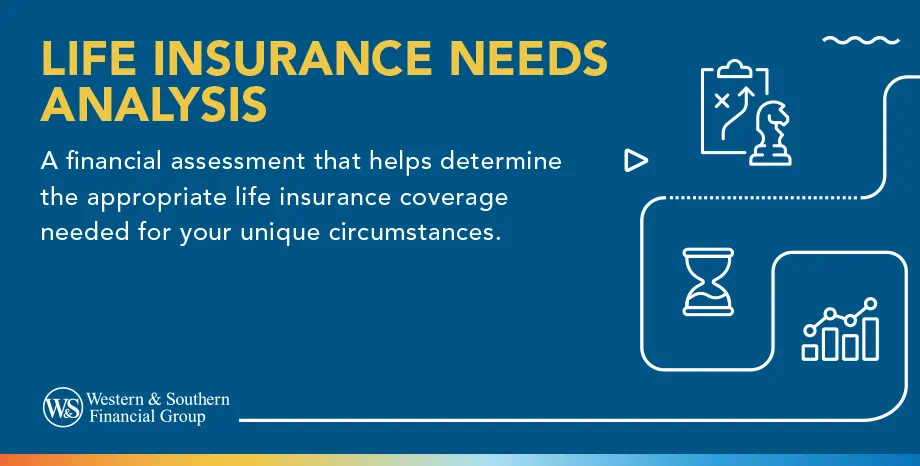Video Transcript
Today, we're tackling a question that many of us face when thinking about the future: How much life insurance do I really need. It can seem overwhelming, but don't worry we're here to break it down for you. The primary is to ensure that your loved ones can maintain their lifestyle, cover any debts, and meet future financial goals without your economic contribution.
Life is essentially about income replacement and financial security. One factor to consider is debts mortgages. This should include your home mortgage, car loans, credit cards, and any other personal debts.
Income Replacement. Consider how many years your family would need support, and then multiply your annual income by that number.
What are you your future obligations down the road. Think about future needs like your children’s education costs or plans for retirement savings and how you may cover those expenses.
And lastly final expenses. Don't forget to include the cost of funeral expenses and any medical bills that might be left behind.
A popular rule of thumb is to buy life insurance that’s 10 to 15 times your annual income. However, this can vary based on your age, obligations, and financial goals. For example, if you make $50,000 a year, you might consider a policy between $500,000 and $750,000. But let's make this more personalized.
To personalize your life insurance add up your financial obligations: Include your total debts, estimated future obligations like college tuition, and estimated costs for final expenses. Subtract your assets. This includes any savings, existing life insurance policies, and investments that can be used towards these expenses. And adjust for your dependents. If you have children, you may need more insurance than someone without dependents. The same goes for those who are caregivers for aging parents or other relatives.
When choosing your life insurance, also consider inflation. What seems like enough now might not be sufficient in 20 years due to inflation, so plan accordingly. Your Health. Health can affect your premiums and what policies you're eligible for, so it’s best to get life insurance while you're healthy. Review regularly life changes, such as getting married, having children, or getting a significant raise at work, can all affect how much life insurance you need. Review your policy every few years or after major life events.
Thank you for watching our guide on determining how much life insurance you need. It’s a big decision, but with the right planning, you can ensure that your loved ones are protected financially.
Key Takeaways
- Life insurance is crucial for protecting loved ones from unexpected financial hardships.
- A needs analysis helps determine the right coverage amount by evaluating financial obligations, future needs, and existing assets.
- Choose between term and permanent life insurance based on your current and future financial goals.
- Revisit your life insurance needs as circumstances change to help ensure appropriate coverage.
- Consulting an experienced life insurance agent can provide tailored advice and help ensure you get the best coverage.
What is a Life Insurance Needs Analysis?
A life insurance needs analysis is a financial assessment that helps determine the appropriate life insurance coverage required for your unique circumstances.
The goal is to help ensure your loved ones have enough financial resources to maintain their quality of life if you pass away. This assessment examines various factors, such as income, debts, lifestyle, and future goals.
For example, consider it a cushion for your family. Imagine you are the sole breadwinner, and your income supports your spouse and children. If you were to pass away, life insurance coverage should provide enough funds to replace your income, pay off outstanding debts, and cover expenses, such as college funds for your children's education, future medical costs, and funeral expenses.
Why Conduct a Life Insurance Needs Analysis?
People often struggle with purchasing life insurance simply because it can feel abstract. Why pay for something you hope you never need?
A needs analysis aims to quantify the potential financial gap left by the policyholder's passing, helping ensure that loved ones do not bear the burden of unpaid loans, funeral costs, or a reduced standard of living.
Conducting a needs analysis offers many benefits, such as:
- Financial Security: Helping ensure your loved ones are financially secure, even in your absence.
- Preventing Financial Hardship: Making sure debts are paid off and your family can maintain its current lifestyle.
- Helping ensure Future Goals Are Met: Providing for your children’s education or your spouse’s retirement security.
The result of this analysis will help you make informed decisions about the type and amount of coverage you need, providing the right balance of protection without overpaying for unnecessary coverage.
Steps for Conducting a Life Insurance Needs Analysis
1. Evaluate Your Current Financial Obligations
The first step in a life insurance needs analysis is evaluating financial obligations. Consider everything your income is currently supporting. Your life insurance should cover these amounts so that your loved ones aren’t left responsible for them. Here are some key areas to consider:
- Debt: What debts do you have? This might include your mortgage, student loans, auto loans, or credit card balances.
- Day-to-Day Living Expenses: Calculate the income your family would need for everyday expenses, including housing, child care, groceries, transportation, and utilities.
- Education Costs: Consider if you need coverage for your children’s education. College tuition can be a significant financial burden, and adequate life insurance can help ease this stress.
For example, if you have a mortgage with $200,000 remaining, children with future tuition needs of $100,000, and $50,000 in other debt, your life insurance should aim to cover these obligations, totaling $350,000.
2. Estimate Future Financial Needs
Next, look at the future needs of your loved ones. This might include major expenses, such as:
- Financial Protection: A rule of thumb is multiplying your annual salary by 5 to 10 times to determine the coverage you’ll need to replace your income for a set period. For example, if you make $70,000 per year, a death benefit of $350,000 to $700,000 could be recommended, depending on your family’s needs and the time they require the income.
- Retirement Contributions: Will your spouse or partner need additional income to supplement their retirement savings? Factor in any contributions that you were planning to make for retirement.
- Emergency Fund: Include an emergency fund that allows your family time to adjust to a new normal.
3. Consider Your Existing Assets
Once you have a sense of your family’s financial needs, it’s time to assess your existing assets and resources. This step is essential in determining how much coverage is truly necessary. These assets might include:
- Savings and Investments: Retirement accounts (401(k)s, IRAs), savings accounts, brokerage accounts, etc.
- Existing Life Insurance: Any policies you may already have, such as those offered by your employer, that will contribute to your family’s support.
- Other Income Sources: Rental income, pensions, or Social Security benefits for surviving spouses and dependent children.
Subtracting the total value of these assets from your overall financial obligations will help you determine the additional coverage required. For example, if you have $200,000 in investments and $50,000 in savings, you can offset part of the total insurance need you calculated earlier.
4. Choose the Right Type of Life Insurance
There are two primary types of life insurance: term and permanent.
- Term Life Insurance: Provides coverage for a specific period, such as 10, 20, or 30 years. It’s typically less expensive and is a good choice if you need coverage for a set period (e.g., until children finish college or a mortgage is paid off).
- Permanent Life Insurance, such as whole life insurance and universal life insurance, provides lifelong coverage and often includes a cash value component that grows over time. This type is more expensive but may suit those who want protection for their lives and have estate planning needs.
The type of insurance you choose will affect your premiums and coverage amount, so consider your financial needs now and in the future.


Common Approaches to Calculating Life Insurance Needs
Several approaches can be used to estimate your insurance needs.
The DIME Method
The DIME method helps you cover all bases when estimating your life insurance needs. You can generate a well-rounded estimate that reflects your family’s needs using the DIME method. It stands for:
- Debt: Add up all debts, including mortgages.
- Income: Calculate financial protection needs (5-10 years).
- Mortgage: Include any mortgage balance.
- Education: Estimate the cost of children’s education.
Human Life Value Approach
The human life approach considers your current and potential future earnings to determine the financial loss your family would experience if you passed away. The goal is to calculate the amount needed to replace your income for a set period, helping ensure your family’s financial security.
For instance, if you earn $70,000 annually and want to replace this income for the next 20 years, a policy of around $1.4 million may be needed.
Financial Protection Method
This is a simple, less detailed way of estimating your coverage. You multiply your annual income by a factor, usually between 5 and 10. This quick approach may overlook unique needs like large debts or educational expenses.
Mistakes to Avoid in Life Insurance Needs Analysis
Underestimating Financial Needs
Many people underestimate how much life insurance they need, especially regarding financial protection. Take into account inflation and rising costs over time. A $50,000 education fund may be enough today, but in 15 years, it could be far short due to increasing tuition costs.
Not Factoring in Existing Coverage
If you already have coverage through an employer or other sources, consider it in your needs analysis. Remember that employer-provided coverage often ends when you leave the company, so it may not always be reliable in the long term.
Choosing the Wrong Type of Policy
The decision between term and permanent life insurance is crucial. Opting for the wrong type could mean overpaying for features you don't need or missing out on the benefits that fit your goals.
Using Life Insurance Calculators
Online life insurance calculators can be handy for estimating your needs, particularly when you're not ready to meet with an advisor. To estimate coverage, these calculators typically ask for information about your debts, income, expenses, and goals.
Get started by trying our life insurance needs calculator
While they can be a helpful starting point, consulting with a financial advisor for a more personalized assessment is recommended.
Seeking Professional Guidance
A life insurance needs analysis can be complicated, particularly when juggling different variables like debts, income, and future costs. Working with a financial planner or insurance agent can help ensure you don’t overlook any critical details. They can provide tailored guidance and help you make sense of the wide variety of insurance products available.
An advisor can also help you avoid purchasing too much insurance, which can result in higher premiums, or too little insurance, which could leave your family financially vulnerable.
Re-Evaluating Your Life Insurance Needs Over Time
Life insurance needs aren’t static. As your circumstances change—marriage, the birth of children, new debts, or a shift in income—you must revisit your coverage and update your financial plan.
For example, if your children have graduated from college and your mortgage is almost paid off, you might not need as much coverage as before. Adjusting your policy can save you money and help ensure your loved ones remain well-protected without unnecessary costs.
Conclusion
Life insurance planning helps ensure your loved ones have the financial support they need to thrive, even when you're no longer there to provide for them.
Conducting a thorough life insurance needs analysis can help determine how much coverage is right for you. Knowing that you’ve cared for those who matter most can give you a sense of security.
Remember, the critical components of an effective needs analysis include evaluating your financial obligations, considering future needs, reviewing existing assets, and selecting the correct type of life insurance.
Life insurance is a gift of security and stability—the ultimate act of financial love. Take the time to understand your needs and make the right choice for you and your family.
Help ensure financial protection with a comprehensive life insurance needs analysis. Get a Free Life Insurance Quote



























